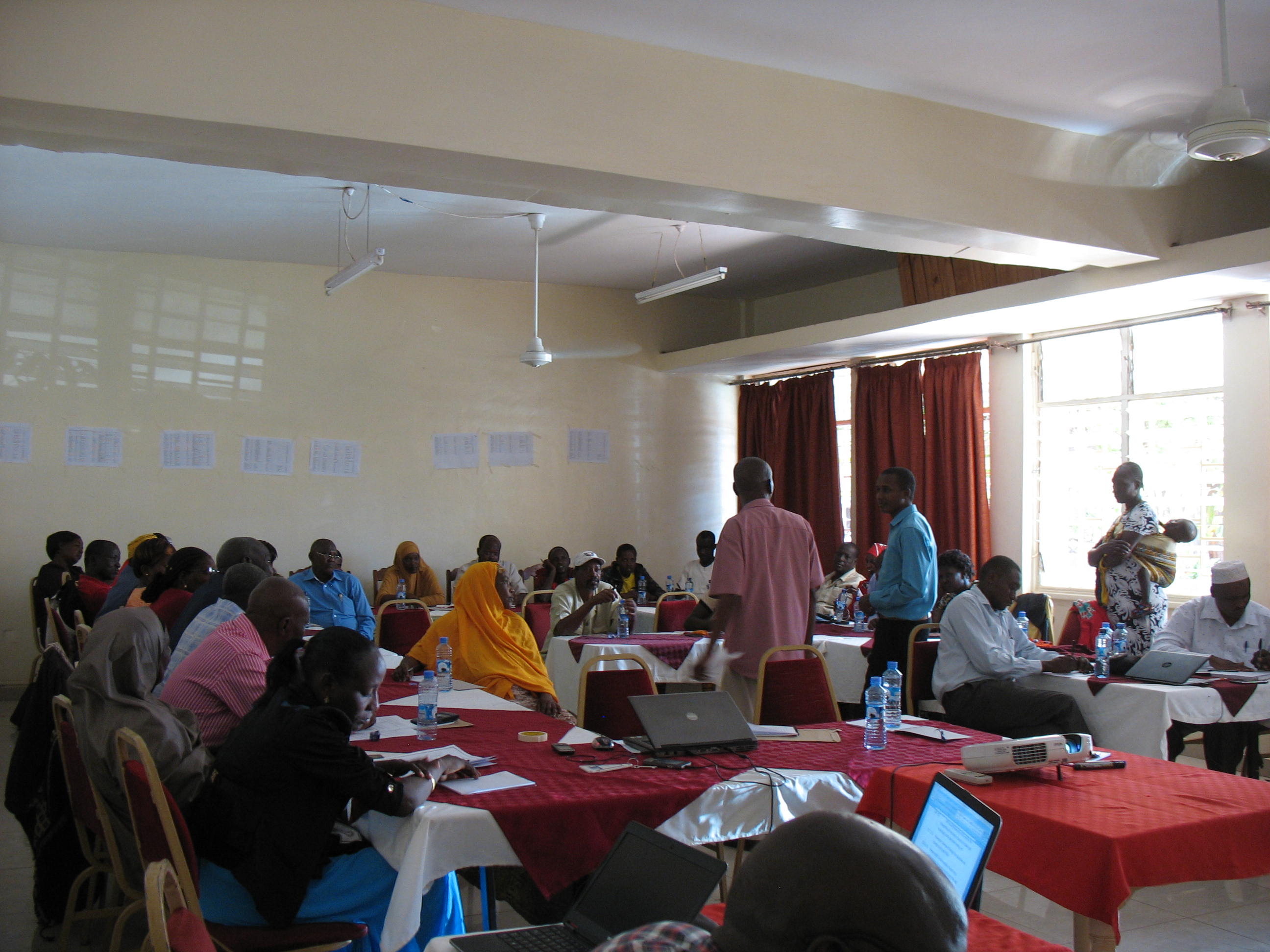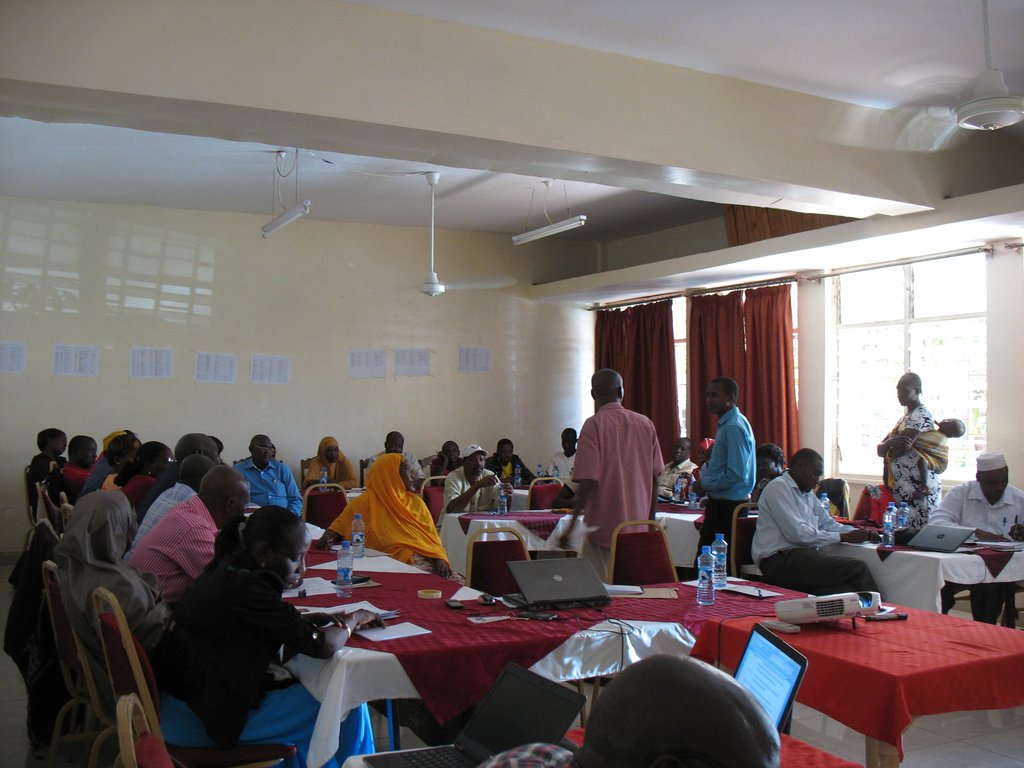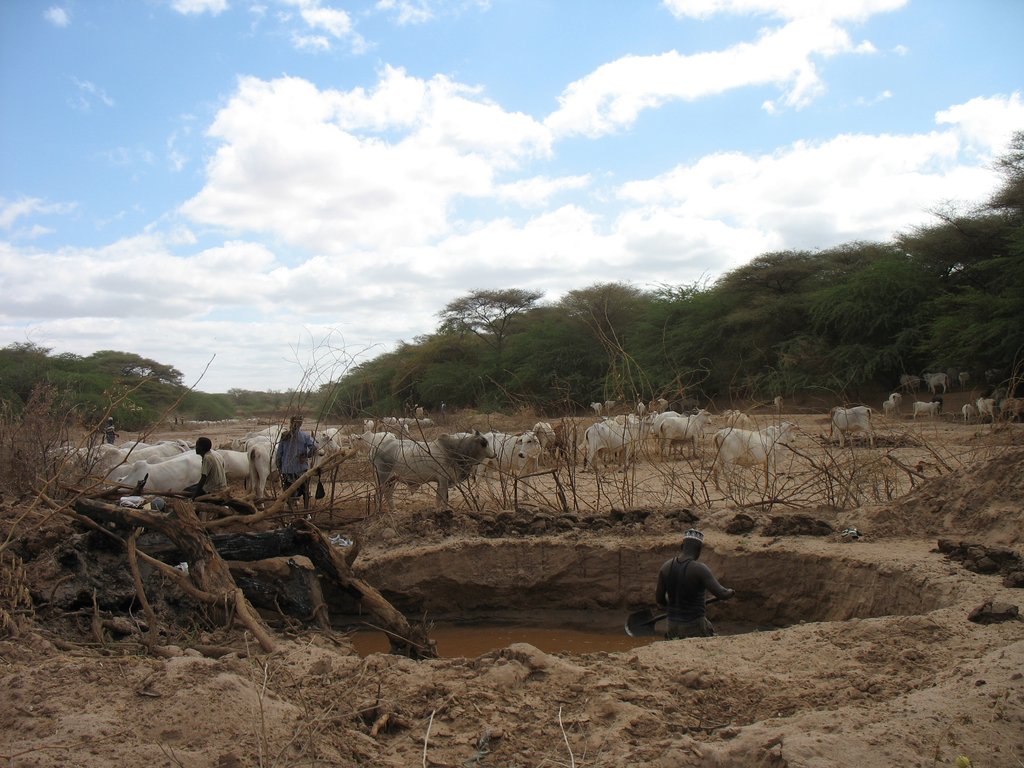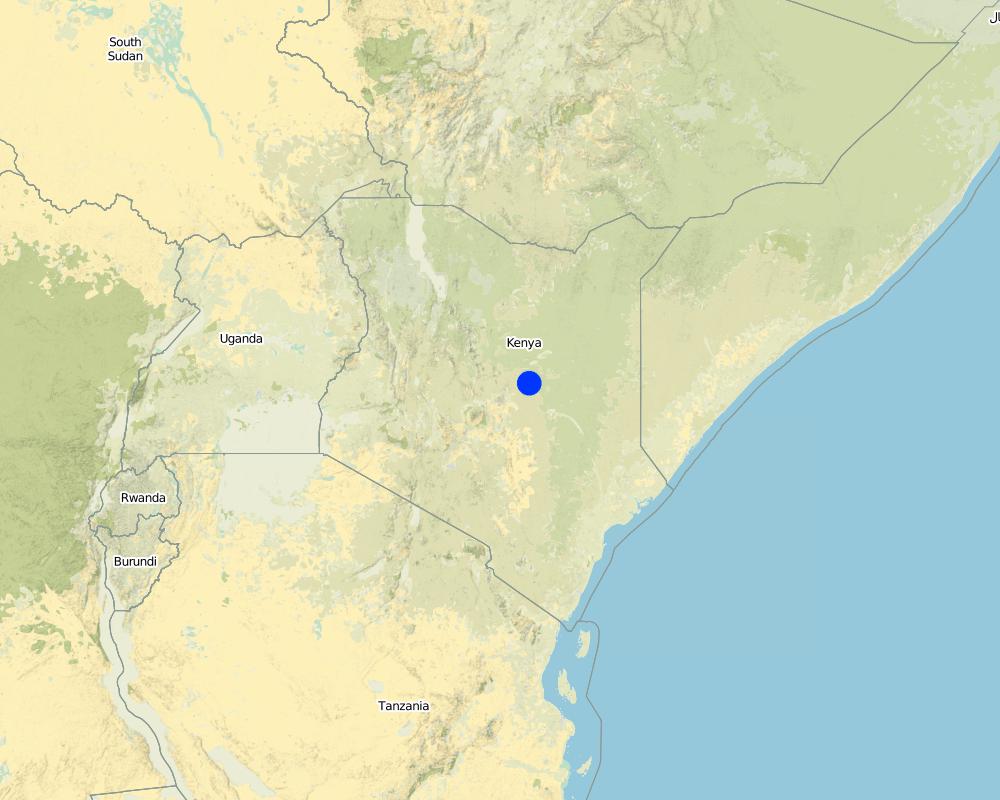Inclusive strategic planning for water, energy and climate change in the rangelands [Kenya]
- Création :
- Mise à jour :
- Compilateur : IBRAHIM JARSO
- Rédacteur : Caroline King-Okumu
- Examinateurs : Donia Mühlematter, Rima Mekdaschi Studer
Devolved strategic planning
approaches_3441 - Kenya
- Résumé complet en PDF
- Résumé complet en PDF pour impression
- Résumé complet dans le navigateur
- Résumé complet (non formaté)
- Inclusive strategic planning for water, energy and climate change in the rangelands: 31 juillet 2018 (inactive)
- Inclusive strategic planning for water, energy and climate change in the rangelands: 17 août 2018 (inactive)
- Inclusive strategic planning for water, energy and climate change in the rangelands: 17 août 2018 (inactive)
- Inclusive strategic planning for water, energy and climate change in the rangelands: 3 septembre 2018 (inactive)
- Inclusive strategic planning for water, energy and climate change in the rangelands: 13 mai 2018 (inactive)
- Inclusive strategic planning for water, energy and climate change in the rangelands: 2 novembre 2021 (public)
- Inclusive strategic planning for water, energy and climate change in the rangelands: 22 mai 2018 (inactive)
- Inclusive strategic planning for water, energy and climate change in the rangelands: 13 mai 2018 (inactive)
Voir les sections
Développer tout Réduire tout1. Informations générales
1.2 Coordonnées des personnes-ressources et des institutions impliquées dans l'évaluation et la documentation de l'Approche
Spécialiste GDT:
Nom du projet qui a facilité la documentation/ l'évaluation de l'Approche (si pertinent)
Strengthening Adaptation and Resilience to Climate Change in Kenya Plus (StARCK+)Nom du ou des institutions qui ont facilité la documentation/ l'évaluation de l'Approche (si pertinent)
Resource Advocacy Programme (RAP) - Kenya1.3 Conditions relatives à l'utilisation par WOCAT des données documentées
Quand les données ont-elles été compilées (sur le terrain)?
22/01/2018
Le compilateur et la(les) personne(s) ressource(s) acceptent les conditions relatives à l'utilisation par WOCAT des données documentées:
Oui
2. Description de l'Approche de GDT
2.1 Courte description de l'Approche
Inclusive strategic planning for water, energy and climate change in the rangelands at county, sub-county, ward and location levels. This involves convening stakeholder groups and reviewing databases to prepare for future needs for rangeland, water and other resources under changing climatic conditions.
2.2 Description détaillée de l'Approche
Description détaillée de l'Approche:
This participatory approach consists of strategic planning through a method that embraces the perspectives of the stakeholder groups, including rangeland resource user associations. Strategic planning is needed in order to rebalance the threats and opportunities created by the annual cycle of droughts and floods, and to coordinate the efforts of local, national and international actors. Key elements of the strategic planning approach include:
i) Scientific tools, databases, systems, and capacities to observe and monitor climate effects, extractions and of water within the catchment;
ii) Clean, affordable and friendly technological solutions to redistribute and conserve water and energy supplies where they are needed within the catchment, particularly during drought and floods;
iii) Inclusive institutions, including active local participation both formally established and customary, to prioritize, guide, supervise and maintain the necessary information systems and infrastructure.
The County Ministry of Water, Energy and Climate Change encourages, and is involved in, a strong community consultation process. It publicly reviews its databases to prioritize investments for a multi-sectoral Strategic Plan. The plan is used to guide investments from the county budget, and also by other actors intending to contribute to managing water, energy and climate change within the county. In the past, the lack of such a strategy and consultation process has held back coordination amongst resource users, and limited the effectiveness of many county and donor-supported interventions, especially in the rangeland areas.
2016-7 was the first time that such an approach to planning had been explored by the county officials. Over 100 women and men representing local customary resource user associations, women’s groups, formal water resource user associations, water committees, irrigation committees, ward adaptation planning committees and others took part in a series of sub-county level consultation meetings. These were conducted in appropriate languages, depending on the mix of participants. The public meetings were preceded by technical preparatory meetings amongst the county technical officers and resource persons.
The Sector Strategic Plan feeds into the preparation of the County Integrated Development Plan (with a 5-year timeframe), as well as the annual budgeting for the county government and its development partners. The recommendations also support and feed into ongoing catchment level planning, as well as broader national planning debates in Kenya, particularly those concerning the Arid and Semi-Arid Lands (ASALs). The overall objective of the Strategic Plan is to enable Isiolo county and its neighbouring ASAL counties in Kenya - and the Horn of Africa - to achieve their full potential as the crucibles of national and global prosperity, security and spiritual well-being.
2.3 Photos de l'approche
Remarques générales concernant les photos:
The Community Consultations were very engaging and productive.
2.5 Pays/ région/ lieux où l'Approche a été appliquée
Pays:
Kenya
Région/ Etat/ Province:
Isiolo
Autres spécifications du lieu :
Both urban and rural areas of Isiolo county.
Map
×2.7 Type d'Approche
- initiative/ innovation récente locale
2.8 Principaux objectifs de l'Approche
The overall objective of the Strategic Plan is to enable Isiolo county and its neighbouring ASAL counties in Kenya – as well as in the Horn of Africa - to achieve their full potential as the crucibles of national and global prosperity, security, and spiritual well-being.
2.9 Conditions favorisant ou entravant la mise en œuvre de la(des) Technologie(s) appliquée(s) sous l'Approche
normes et valeurs sociales/ culturelles/ religieuses
- favorise
The approach is embedded in the local institutional processes and therefore easy to implement.
- entrave
The occurrence of crises and emergencies (such as drought) routinely disrupts long-term strategic planning.
disponibilité/ accès aux ressources et services financiers
- favorise
County governments have some resources to convene meetings, but communities make their own contributions to prepare and support implementation of the approach.
- entrave
Very few donors are willing to provide funds to support this approach.
cadre institutionnel
- favorise
Ward-level adaptation planning committees connect the county level process to the local resource user institutions at the location level.
- entrave
Collision between the mandates of traditional and formal structures.
collaboration/ coordination des acteurs
- favorise
Many NGOs and local organizations support the implementation of the approach and will benefit from improved coordination and planning.
- entrave
Government and some NGOs occasionally establish parallel policy processes.
cadre juridique (régime foncier, droits d'utilisation des terres et de l'eau)
- favorise
2010 national constitutional reforms promote devolution. Traditional customary institutions are actively and locally respected.
- entrave
Weak catchment institutions and coordination.
cadre politique
- favorise
2010 Constitution, 2030 Plan for the ASALs.
- entrave
Traditional rules not known to everyone.
gouvernance foncière (prise de décisions, mise en œuvre et application des décisions)
- favorise
County government makes informed decisions following consultation with communities and the formation of databases.
- entrave
Literacy and language barriers (though can be overcome through good communication, mobility and outreach by county officers)
connaissances sur la GDT, accès aux supports techniques
- favorise
Traditional skills are much used as an input to participatory resource maps and databases.
- entrave
Little technical support.
marchés (pour acheter les intrants, vendre les produits) et prix
- favorise
Ensures security and therefore the market thrives.
- entrave
The approach is social rather than market oriented.
charge de travail, disponibilité de la main-d'œuvre
- favorise
Youth provide manpower on a voluntary basis.
- entrave
Volunteers sometimes don’t come out for work.
3. Participation et rôles des parties prenantes impliquées dans l'Approche
3.1 Parties prenantes impliquées dans l'Approche et rôles
- exploitants locaux des terres / communautés locales
Community members, Elders’ Council (Dedha in Boran setups).
Agree on the pasture and water management approach and implement it.
- organisations communautaires
Ward Adaptation Planning Committees.
Implement community plans and fundraise for them.
- ONG
RAP, MIDP and Adaptation Consortium (ADA).
Support communities in implementing the approach.
- gouvernement local
Isiolo County Government’s Department of Water, Energy and Climate Change.
Participate in the implementation of the approach.
Si plusieurs parties prenantes sont impliquées, indiquez l'organisme chef de file ou l'institution responsable:
Isiolo County Government
3.2 Participation des exploitants locaux des terres/ communautés locales aux différentes phases de l'Approche
| Participation des exploitants locaux des terres/ communautés locales | Spécifiez qui était impliqué et décrivez les activités | |
|---|---|---|
| initiation/ motivation | interactive | County government, National Drought Management Authority, Water Resource Management Authority, RAP, IIED. |
| planification | interactive | Local customary resource user associations, women’s groups, formal water resource user associations, water committees, irrigation committees, ward adaptation planning committees and others. |
| mise en œuvre | interactive | County government and resource users. |
| suivi/ évaluation | interactive | County government and resource users. |
| passive | National government, international donors. |
3.3 Diagramme/ organigramme (si disponible)
Description:
Local village level community institutions are involved in the planning and management of resources. The community institutions at village level are connected to those at ward level, which connect to sub-county and county level institutions for planning. Lower level institutions had not ever previously been asked for their opinions and inputs.
Auteur:
Ibrahim Jarso
3.4 Prises de décision pour la sélection de la Technologie/ des Technologies
Indiquez qui a décidé de la sélection de la Technologie/ des Technologies à mettre en œuvre:
- tous les acteurs concernés dans le cadre d'une approche participative
Spécifiez sur quelle base ont été prises les décisions:
- l'évaluation de connaissances bien documentées en matière de GDT (prises de décision fondées sur des preuves tangibles)?
- les résultats de recherches?
- expériences et opinions personnelles (non documentées)
4. Soutien technique, renforcement des capacités et gestion des connaissances
4.1 Renforcement des capacités/ formation
Une formation a-t-elle été dispensée aux exploitants des terres/ autres parties prenantes?
Non
4.2 Service de conseils
Les exploitants des terres ont-ils accès à un service de conseils?
Non
4.3 Renforcement des institutions (développement organisationnel)
Des institutions ont elles été mises en place ou renforcées par le biais de l'Approche?
- oui, modérément
Spécifiez à quel(s) niveau(x), ces institutions ont été renforcées ou mises en place:
- local
Décrivez l'institution, ses rôles et responsabilités, ses membres, etc.
County government's officers skills in participatory engagement were improved.
Précisez le type de soutien:
- renforcement des capacités/ formation
Donnez plus de détails:
Support was provided on the job.
4.4 Suivi et évaluation
Le suivi et l'évaluation font ils partie de l'Approche? :
Non
4.5 Recherche
La recherche a-t-elle fait partie intégrante de l’Approche?
Non
5. Financement et soutien matériel externe
5.1 Budget annuel de la composante GDT de l'Approche
Si le budget annuel précis n'est pas connu, indiquez une fourchette:
- 10 000-100 000
Commentez (par ex. principales sources de financement/ principaux bailleurs de fonds):
Funds were provided from DfID and other sources were also used to support this process.
CORDAID funded the consultation meetings on Customary NRM Bill.
5.2 Soutiens financiers/ matériels fournis aux exploitants des terres
Les exploitants des terres ont-ils reçu un soutien financier/ matériel pour la mise en œuvre de la Technologie/ des Technologies?
Non
5.3 Subventions pour des intrants spécifiques (incluant la main d'œuvre)
- aucun
Si la main d'œuvre fournie par les exploitants des terres était un intrant substantiel, elle était:
- volontaire
Commentaires:
Communities participated in consultation meetings voluntarily.
5.4 Crédits
Des crédits ont-ils été alloués à travers l'Approche pour les activités de GDT?
Non
5.5 Autres incitations ou instruments
D'autres incitations ou instruments ont-ils été utilisés pour promouvoir la mise en œuvre des Technologies de GDT?
Non
6. Analyses d'impact et conclusions
6.1 Impacts de l'Approche
Est-ce que l'Approche a autonomisé les exploitants locaux des terres, amélioré la participation des parties prenantes?
- Non
- Oui, un peu
- Oui, modérément
- Oui, beaucoup
The communities were able to participate in planning to improve development at local grassroots level.
Est-ce que l'Approche a permis la prise de décisions fondées sur des données probantes?
- Non
- Oui, un peu
- Oui, modérément
- Oui, beaucoup
The Approach was able to offer opportunities for all community groups to provide their inputs into the process of strategic planning at county level, allowing room for evidence-based decisions informed by people’s experience.
Est-ce que l'Approche a aidé les exploitants des terres à mettre en œuvre et entretenir les Technologies de GDT?
- Non
- Oui, un peu
- Oui, modérément
- Oui, beaucoup
The Approach allowed community members to document their needs and priorities in line with their sustainable land management systems, which were traditional and holistic.
Est-ce que l'Approche a amélioré la coordination et la mise en œuvre de la GDT selon un bon rapport coût-efficacité?
- Non
- Oui, un peu
- Oui, modérément
- Oui, beaucoup
The Approach brought together key community-level stakeholders and coordinated them in planning.
Est-ce que l'Approche a mobilisé/ amélioré l'accès aux ressources financières pour la mise en œuvre de la GDT?
- Non
- Oui, un peu
- Oui, modérément
- Oui, beaucoup
The Approach produced a participatory and inclusive plan that included costs for support at different levels and this helped in fundraising for community investments.
Est-ce que l'Approche a amélioré les connaissances et les capacités des exploitants des terres pour mettre en œuvre la GDT?
- Non
- Oui, un peu
- Oui, modérément
- Oui, beaucoup
County government officers learnt that the approach was very productive in bringing out ideas from the grassroots to inform strategic planning.
Est-ce que l'Approche a amélioré les connaissances et les capacités des autres parties prenantes?
- Non
- Oui, un peu
- Oui, modérément
- Oui, beaucoup
The stakeholders that came together learnt a lot from the process and multi-stakeholder forums like WASH clubs were formed out of the discussions.
Est-ce que l'Approche a construit/ renforcé les institutions, la collaboration entre parties prenantes?
- Non
- Oui, un peu
- Oui, modérément
- Oui, beaucoup
Many institutions that were consulted in the implementation of the approach were strengthened in their capacity - and were able to engage in subsequent government-community consultations that came up later.
Est-ce que l'Approche a autonomisé les groupes socialement et économiquement défavorisés?
- Non
- Oui, un peu
- Oui, modérément
- Oui, beaucoup
The approach ensured consultations with special interest/disadvantaged groups.
Est-ce que l'Approche a amélioré l'égalité entre hommes et femmes et autonomisé les femmes et les filles?
- Non
- Oui, un peu
- Oui, modérément
- Oui, beaucoup
A significant proportion of women and girls attended the meetings and made critical and unique contributions. Deliberate efforts were undertaken to ensure inclusivity by holding women’s meetings to seek their inputs.
Est-ce que l'Approche a encouragé les jeunes/ la prochaine génération d'exploitants des terres à s'engager dans la GDT?
- Non
- Oui, un peu
- Oui, modérément
- Oui, beaucoup
Young people were also represented in the consultations.
Est-ce que l'Approche a conduit à améliorer l'accès à l'eau et l'assainissement?
- Non
- Oui, un peu
- Oui, modérément
- Oui, beaucoup
The approach identified challenges, opportunities and actions that could be undertaken in improving access to water and sanitation in the development of a strategic plan.
Est-ce que l'Approche a conduit à l'utilisation/ sources d'énergie plus durables?
- Non
- Oui, un peu
- Oui, modérément
- Oui, beaucoup
The approach identified locally utilisable sources of energy, and encouraged the use of clean and green energy.
Est-ce que l'Approche a amélioré la capacité des exploitants des terres à s'adapter aux changements/ extrêmes climatiques et a atténué les catastrophes liées au climat?
- Non
- Oui, un peu
- Oui, modérément
- Oui, beaucoup
The approach allowed the county government officers to engage with the community in discussions on climate-related disasters as well as their elaborated traditional systems of grazing. Communities were advised to also use scientific measures, like utilization of CIS forecasts, to deal with climate-related disasters.
6.2 Principale motivation des exploitants des terres pour mettre en œuvre la GDT
- augmenter la production
The process of inclusive strategic planning exposed the deepest vulnerabilities of communities for the county government investments to address it. This has improved productivity in all sectors.
- réduire la dégradation des terres
The approach allowed proper planning on water investments which had impacts in management and proper use of land and its resources. Placement of water investments closer to each other causes land degradation and through inclusive strategic planning this has been tremendously reduced.
- conscience environnementale
Through the Approach environmental protection and conservation had been given the first priority as a way to sustainably use the natural resources.
6.3 Durabilité des activités de l'Approche
Les exploitants des terres peuvent-ils poursuivre ce qui a été mis en œuvre par le biais de l'Approche (sans soutien extérieur)?
- oui
Si oui, décrivez de quelle manière:
Community members can demand participatory and inclusive development in all government plans and policies, in the way the strategic plan for water sector was developed by the Isiolo County Government's department of Water, Energy and Climate Change.
6.4 Points forts/ avantages de l'Approche
| Points forts/ avantages/ possibilités du point de vue de l'exploitant des terres |
|---|
| All community groups are given an opportunity to contribute to the planning process. |
| Hidden community concerns and challenges are brought out by the participatory process. |
| County government officers were able to hear first-hand community issues and respond to community questions regarding their responsibilities. |
| Points forts/ avantages/ possibilités du point de vue du compilateur ou d'une autre personne ressource clé |
|---|
| The inclusive and participatory process was extremely productive in bringing out issues. |
| Community knowledge of their challenges and optimistic ideas for possible solutions were very enriching. |
| Women’s participation and their contribution to issues was unexpectedly high and demonstrates progress towards gender equity. |
6.5 Faiblesses/ inconvénients de l'Approche et moyens de les surmonter
| Faiblesses/ inconvénients/ risques du point de vue de l’exploitant des terres | Comment peuvent-ils être surmontés? |
|---|---|
| The Approach was unable to reach all villages in the county to seek their inputs. | Representatives from all villages can be convened at ward level and advised to make cross-consultations before attending planning meetings. |
| Low literacy levels meant that not all people could engage properly with the formal planning process. | Using translators of local vernacular helped to reduce this challenge. |
| Faiblesses/ inconvénients/ risques du point de vue du compilateur ou d'une autre personne ressource clé | Comment peuvent-ils être surmontés? |
|---|---|
| The process was relatively expensive compared to previous county engagements. | Explain the value of county-community engagements in planning to communities, and encourage other stakeholders to support the process also. |
| The process took a long time to complete. | The team conducting the public engagement can conduct more than one initiative simultaneously and thereby economise on time. |
7. Références et liens
7.1 Méthodes/ sources d'information
- visites de terrain, enquêtes sur le terrain
Engaged 25 community members.
- compilation à partir de rapports et d'autres documents existants
Reports of the Community Consultations used as source of information.
7.2 Références des publications disponibles
Titre, auteur, année, ISBN:
Recommendations to the County Government of Isiolo for Preparation of a Strategic Plan on Water, Energy and Climate Change
Disponible à partir d'où? Coût?
IIED Website
7.3 Liens vers les informations pertinentes disponibles en ligne
Titre/ description:
Recommendations to the County Government of Isiolo for Preparation of a Strategic Plan on Water, Energy and Climate Change
URL:
pubs.iied.org/pdfs/10183IIED
Titre/ description:
Cracking the climate-water-energy challenge in the drylands of Kenya
URL:
pubs.iied.org/pdfs/17408IIED
Liens et modules
Développer tout Réduire toutLiens
Aucun lien
Modules
Aucun module trouvé






